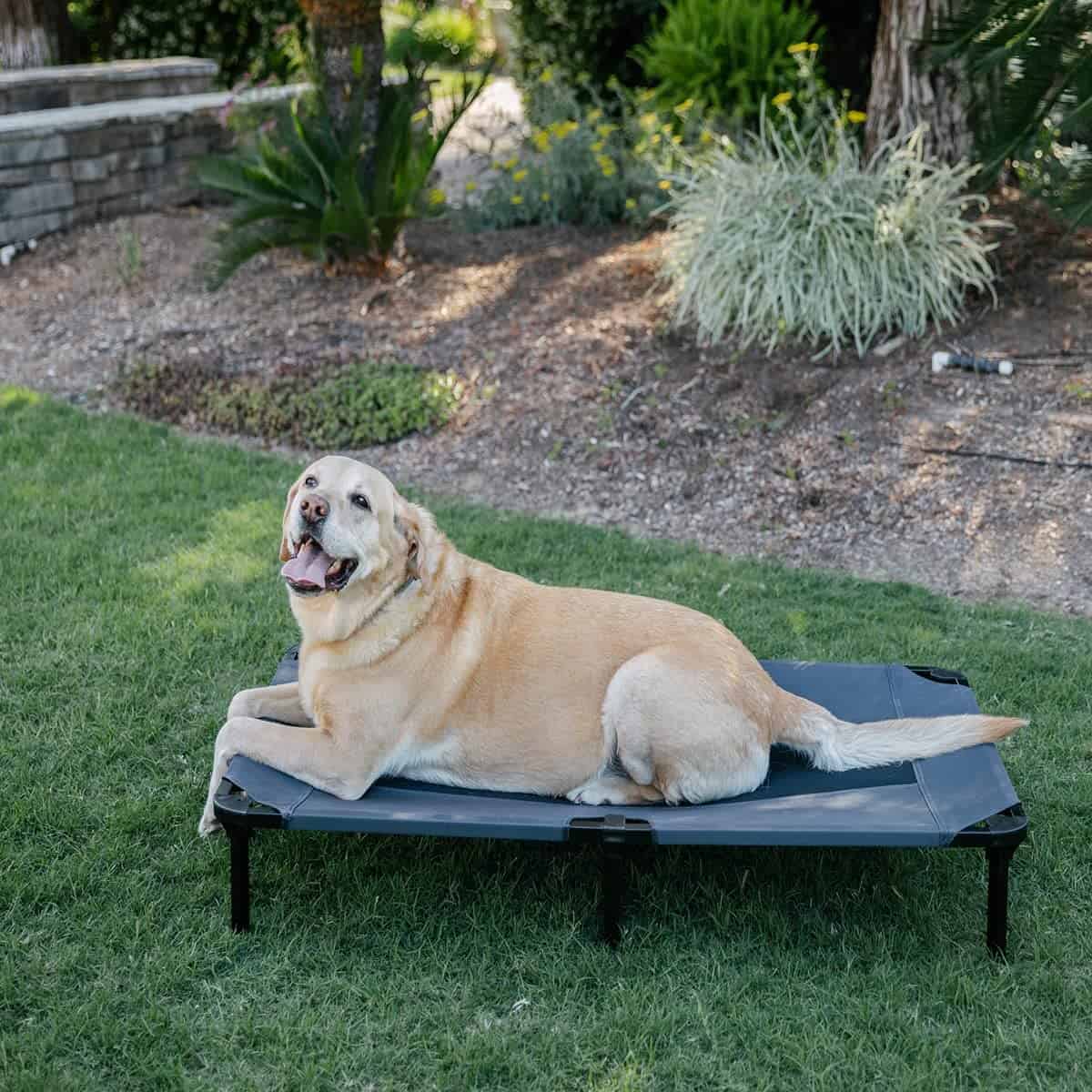Have you ever considered getting an elevated dog bed for your furry friend, but wondered if it’s worth the investment? If so, you’re not alone. As dog owners, we all want to provide the best care for our pets, including a comfortable place for them to rest. But with so many types of dog beds on the market, it can be hard to know which one is right for your pet.
This is where the question comes in: are elevated dog beds good for dogs? Elevated dog beds have been gaining popularity in recent years, but what are they exactly, and what are the benefits and drawbacks of using one? In this ultimate guide, we’ll explore the world of elevated dog beds and help you decide whether they’re the right choice for your furry friend.
We’ll delve into the benefits of elevated dog beds, such as improved air circulation, temperature regulation, and joint relief. We’ll also examine the potential drawbacks, including comfort concerns and higher costs. By the end of this guide, you’ll have a complete understanding of what elevated dog beds are, how they work, and what to consider when choosing one for your pup.
So, whether you’re a new pet owner or a seasoned pro, read on to discover the answers to all your questions about elevated dog beds and help your furry friend get the restful, comfortable sleep they deserve.
The benefits of using an elevated dog bed?
Using an elevated dog bed can be beneficial for both you and your pet:
- It provides additional support for aging or arthritic dogs
- Keeps them off cold floors, encourages better air circulation
- Allows easier movement to get in and out of the bed
- Reduces joint stress on pressure points from sleeping on flat surfaces
- Helps reduce allergens such as dander.
Additionally, elevated beds can increase their overall warmth by allowing heat to circulate better from underneath their body. Elevated beds can also help provide a comfortable area for your pet to rest and relax without having to worry about dirt or other messes getting in the bed.
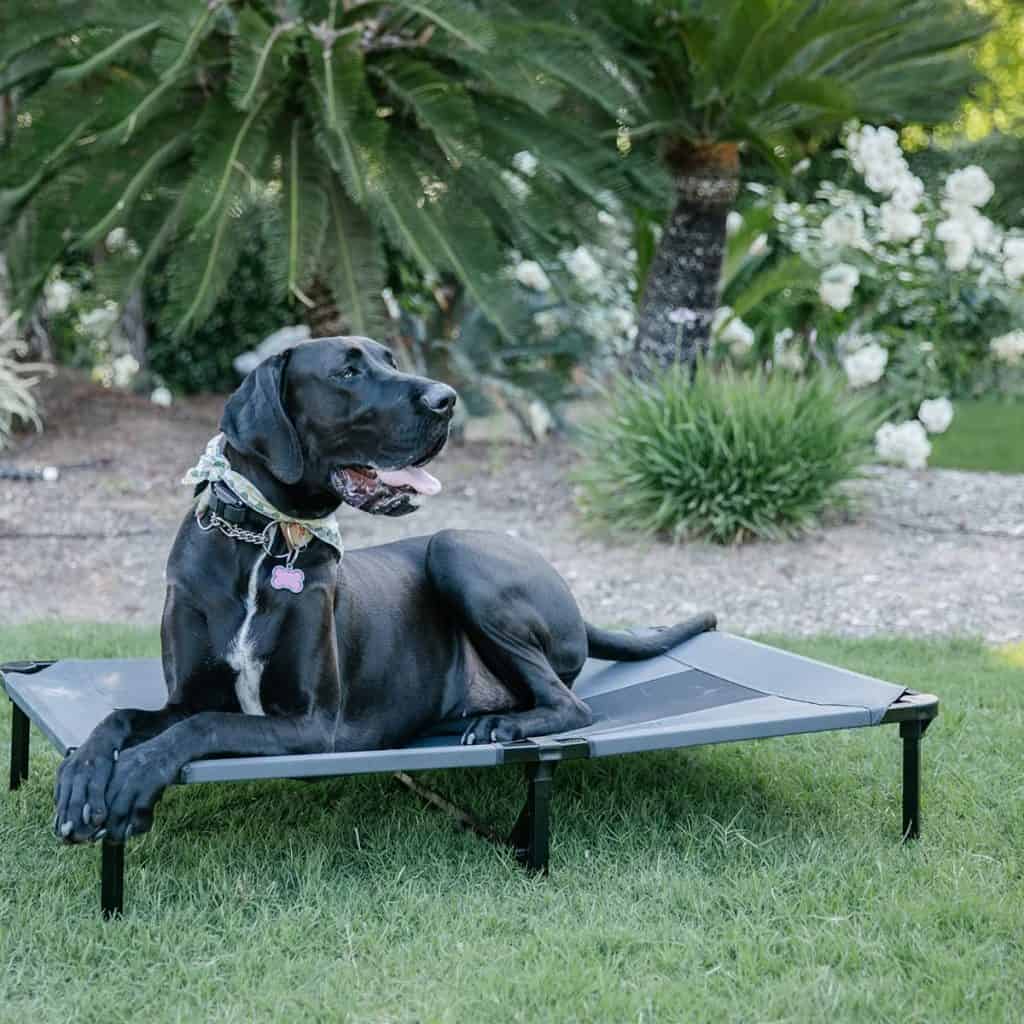
How much are elevated dog beds?
The cost of an elevated dog bed will vary depending on the size, quality, and features of the bed. Generally speaking, you can expect to pay anywhere from $30 to $60 for a basic bed for small breeds. For larger breeds, prices range from $50 to $125 or more for one with extra features such as removable covers or additional padding. Some high-end, heavy-duty, chew-proof beds with aluminum frames can go up to $200.
If you’re looking for a durable and comfortable bed for your pup that won’t break the bank, then an elevated dog bed is a great option.
Do elevated dog beds provide joint support for older dogs?
Elevated dog beds can provide great joint support for older dogs as they are designed to be both comfortable and supportive. The top fabric layer of these beds provides cushioning, while the elevated frame helps reduce pressure on joints and other areas that can be tender.
It’s important to note that not all elevated dog beds are created equal; some are better suited for larger breeds, while others may not provide enough support for joint-related issues.
Regardless, an elevated bed is often a good choice when looking for extra comfort and joint support for your beloved senior pup.
How to pick the best elevated dog bed?
When picking a raised dog bed, there are several things to look for, including:
- Size: Choose a bed that is the right size for your dog, with enough room for them to stretch out comfortably.
- Weight capacity: Make sure the bed can support your dog’s weight, and check the weight limit specified by the manufacturer.
- Material: Look for a durable and easy-to-clean material that can withstand your dog’s activity level and any potential accidents.
- Height: Consider the height of the bed and make sure it’s appropriate for your dog’s size and mobility. A bed that’s too high can be difficult for a smaller or older dog to climb onto.
- Stability: Look for a bed with a sturdy and stable frame to prevent it from tipping or wobbling, which could cause your dog to fall off.
- Portability: If you plan to use the bed outdoors or take it with you on trips, consider a lightweight and portable design that’s easy to pack up and move around.
- Style: Finally, choose a bed that fits your dog’s preferences and your home decor, whether it’s a basic cot-style bed or a more luxurious elevated design with a plush cushion and built-in canopy.
By considering these factors, you can choose an elevated dog bed that will give your dog a comfortable and safe place to rest.
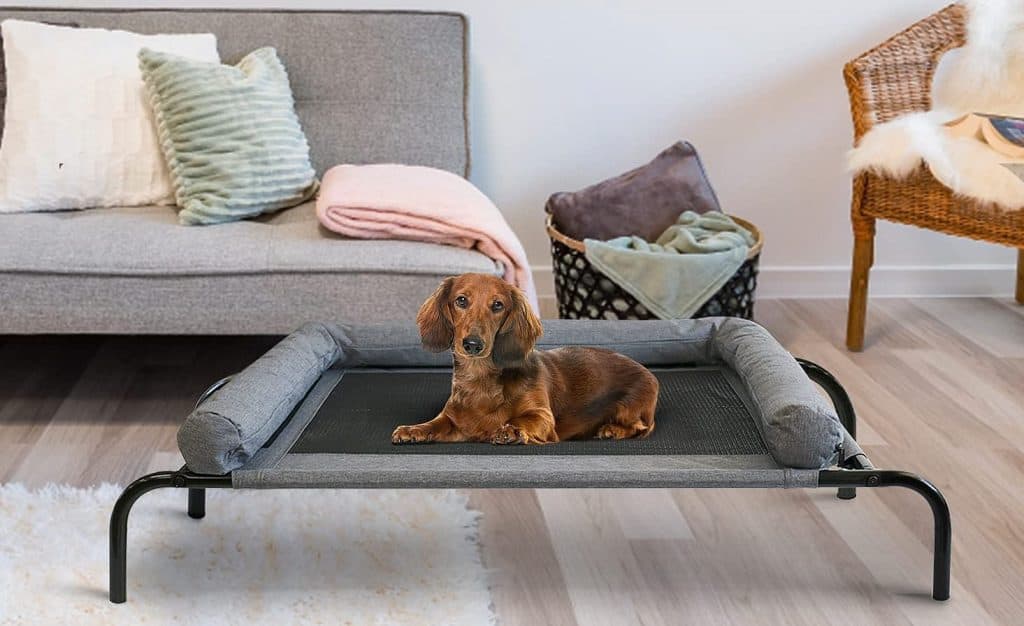
Are Elevated Dog Beds Good for Giant Dog Breeds?
Elevated dog beds are an excellent option for giant dog breeds. They offer the comfort and security of a traditional style bed, but with the added height that can help protect big dogs from drafts and provide extra cushioning from hard surfaces.
Elevated beds also help promote good circulation, reduce joint pain and strain on pressure points, and offer better orthopedic support than standard flat beds. Additionally, raised beds can be easily cleaned and kept free of fur and dander, which helps keep allergies at bay.
All in all, a raised bed provides superior support for your giant breed companion and makes a great addition to any home.
Why do dog trainers use elevated beds?
Dog trainers may use elevated beds for several reasons:
Separation from other dogs: Elevated beds can be a useful tool for managing a group of dogs in a training or daycare setting. By giving each dog its own raised bed, trainers can help prevent dogs from getting too close or interacting with each other in a way that might lead to conflict.
Focus and attention: An elevated bed can help a dog stay focused on a specific task or training exercise, as it provides a designated place for the dog to work and reduces distractions from the surrounding environment.
Comfort and relaxation: Dogs can benefit from having a comfortable and designated resting spot during training or play sessions, especially in environments with hard or cold floors. An elevated bed can provide a cozy and cushioned place for a dog to relax and recharge.
Improved behavior: By giving a dog a designated resting spot on an elevated bed, trainers can help teach the dog boundaries and reinforce positive behaviors, such as staying calm and quiet while on the bed.
Overall, an elevated dog bed can be a useful tool for dog trainers in managing groups of dogs, promoting good behavior, and providing a comfortable and safe space for dogs to rest and recharge.
Are elevated dog beds good for cold weather?
Elevated dog beds are a great option for cold weather since they provide an insulated area for your pup to sleep in, keeping them off the cold ground or floor. The raised design also allows air to circulate beneath it, creating an insulating barrier between your pup and the chill of winter.
Additionally, many elevated beds are made from materials that help regulate body temperatures, such as memory foam or self-heated cushioning, to keep your pet warm even on the coldest nights.
Not only that, but elevated dog beds are lightweight and easy to transport should you choose to move them around indoors when temperatures change.
Elevated pet beds can be a useful tool for keeping your pup cozy during the cold weather season.
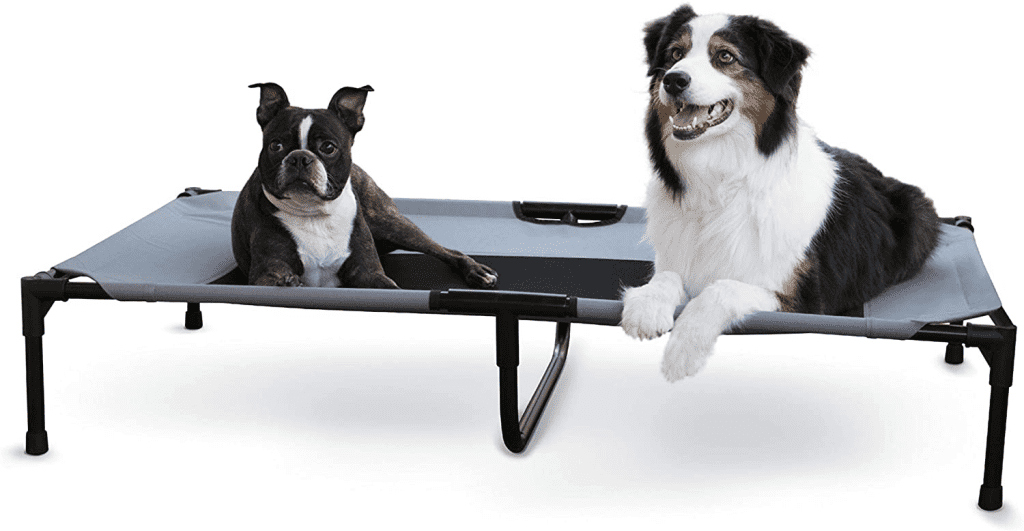
Are elevated dog beds good for older dogs?
Yes, elevated dog beds can be good for older dogs, especially those with arthritis or joint pain. Sleeping on an elevated bed can reduce pressure on the joints and make it easier for older dogs to get up and down. It can also help keep them comfortable and cool, as the raised surface allows for increased air circulation.
However, it’s important to choose an elevated bed that is easy for your older dog to access. Look for a bed that is not too high or too low, and has a stable and sturdy frame. A bed with a non-slip surface can also help prevent slips and falls.
If your older dog has difficulty climbing onto a bed, you may want to consider a ramp or steps to make it easier for them to access the elevated surface.
Overall, elevated dog beds can be a good option for older dogs, but it’s important to choose a bed that is appropriate for their needs and comfort.
What are some disadvantages of raised dog beds?
While raised pet beds have many benefits, there are also some potential disadvantages to consider:
- Cost: Elevated dog beds can be more expensive than traditional dog beds, especially if you opt for higher-end or specialized models.
- Assembly: Some require assembly, which can be time-consuming or difficult for those who are not handy.
- Mobility: Elevated dog beds can be difficult for dogs with mobility issues to climb onto, especially if the bed is too high or lacks a ramp or steps.
- Stability: Some lower-end models can be wobbly or unstable, which can be dangerous for dogs, especially if they are older or have balance issues.
Overall, while elevated dog beds have many benefits, they may not be the best option for every dog or every situation. It’s important to consider your dog’s needs and preferences, as well as any potential drawbacks before you invest in an elevated dog bed.
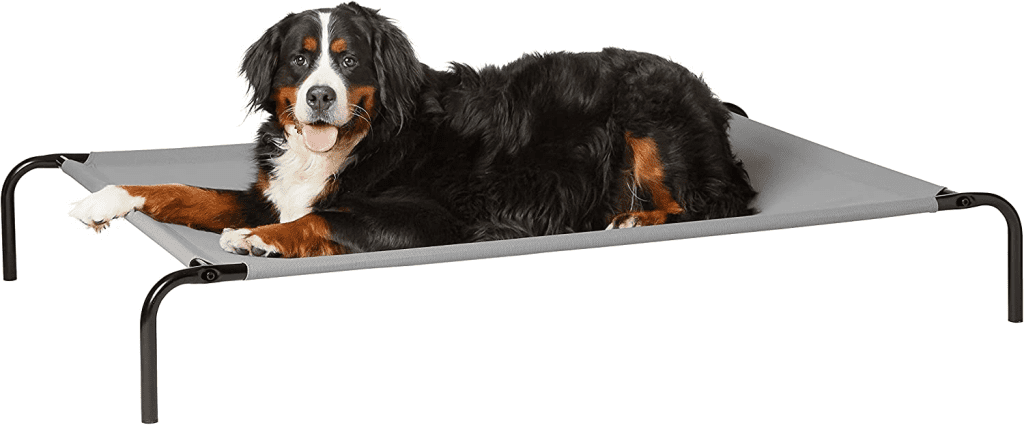
Frequently asked questions
Is it healthy for dogs to sleep on the floor?
Sleeping on the floor is not generally recommended for dogs as hard surfaces can cause joint problems. While some breeds may feel comfortable and even prefer a hard surface, it’s generally better to provide a comfortable bedding option.
Ideally, their bed should be made of a material that provides cushioning and comfort while also providing support for bones and joints. A dog bed should also be big enough for your pet to move around in easily, so they have plenty of space to stretch out or curl up when napping.
How often should I clean an elevated pet bed?
Cleaning an elevated pet bed should be done regularly to ensure it remains in good condition and safe for your pet. Depending on the size of the bed, how often it is used, and the type of material it is made from, you may want to clean it every few weeks or once a month. If your pet tends to have accidents or makes a mess sometimes, make sure you clean it more frequently than usual.
Additionally, if your pet has any skin sensitivities, consider spot cleaning more frequently to help reduce irritation for them.
Final thoughts
In conclusion, elevated dog beds can be a great option for many dogs, offering numerous benefits such as increased air circulation, joint support, and comfortable resting surfaces. However, it’s important to consider factors such as your dog’s size, age, and mobility when selecting an elevated bed, as well as potential drawbacks like cost, assembly, and stability.
At the end of the day, the decision to use an elevated dog bed ultimately depends on your dog and its unique needs. It’s important to take the time to research and consider different options and to consult with your veterinarian if you have any concerns about your dog’s health or comfort.
As pet owners, we all want the best for our furry friends, and an elevated dog bed can be a great tool for providing them with a comfortable and healthy place to rest and recharge. So whether you choose an elevated bed or another type of bed for your dog, what matters most is that you provide them with a safe and comfortable space to call their own.
Recent Posts
As a dog owner, you want to ensure that you take proper care of your furry companion. A common question that many pet owners have is, "Can I walk my dog 30 minutes after eating?" Understanding the...
6 Reasons Why Your Dog is Suddenly Sleeping on the Floor Instead of Bed
If you've noticed your beloved four-legged friend suddenly sleeping on the floor instead of in their cozy bed, you may wonder why they're making this change. The answer could be several things, some...

